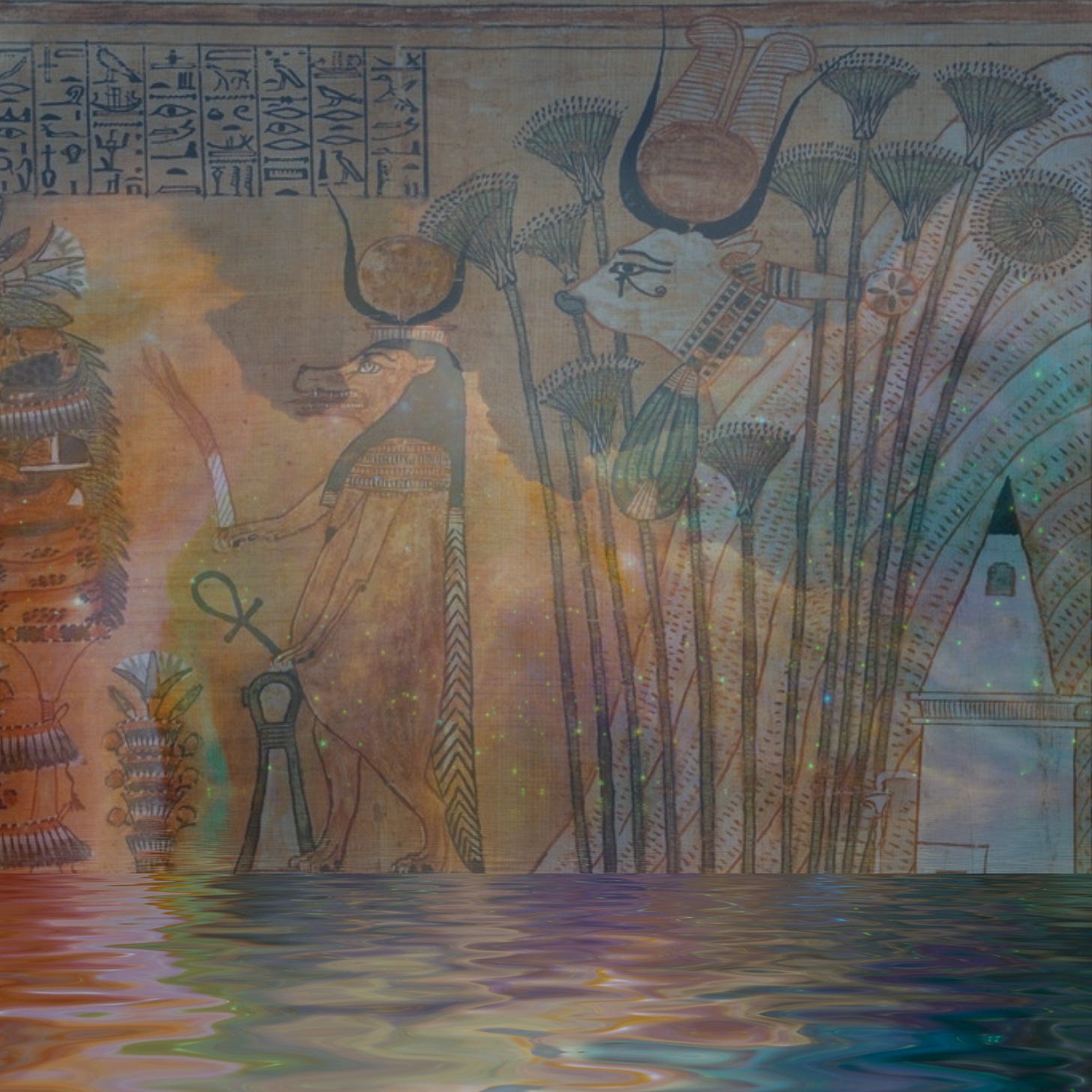A Chairde, Friends,
We arrive at the banks of Bóinn, who is both an earthly river goddess—the River Boyne—and a celestial river goddess, serving as a symbol of the Milky Way.
Let’s dive into her waters.
White Cow
Take a breath here, invite forth the image of a white cow to flow into your consciousness. Close your eyes for a moment. What do you see?
This image is ancient. The white cow is a symbol of the Great Mother. She travels across time, space and cultures. She is archetypal, a primordial image of the Goddess. From the ancient Egyptians who worshipped Hathor, the cosmic cow whose divine milk nourished the pharaohs, to the ancient Irish, and their worship of their own white cow, Bóinn, whose milky waters nourished our ancestors with divine wisdom.
Bóinn (sometimes spelled Boand or Boann) derives from the Irish word bó meaning ‘cow’ and proto-Celtic vinda or finn in Old Irish meaning ‘white’ or ‘fair’. Some believe that Bóinn is the mother of Brigid (Brigid’s mother is unnamed or lost in the sources), as she will drink only from a white cow with red ears, a symbol of the Otherworld. In her later Christianised form as Saint Brigid, she travels blessing homesteads across the land accompanied by this magical heifer.
Brigid’s father, the Dagda, is one of Bóinn’s lovers, which makes Óengus (the son of the Dagda and Bóinn) Brigid’s brother. There’s also the possibility that Bóinn and Brigid were originally one Great Mother goddess. The messy intrigue of the Irish pantheon aside, both Bóinn and Brigid were hugely significant in the Celtic world.
River of Earth, River of Heavens
As an earthly river, known in English as the River Boyne, Bóinn runs through some of Ireland’s most sacred sites, including the UNESCO World Heritage complex Brú na Bóinne, the triplicity of 5,000-year-old temples: Newgrange, Knowth and Dowth. Brú is usually translated into English as ‘mansion’, but it also means ‘womb’ or ‘belly’ in Old Irish. Bóinne, then, means ‘of Bóinn’. Perhaps ‘Womb of the White Cow’ (i.e. Bóinn's womb) was too far a stretch for the early translators, as they referred to these megaliths as the ‘mansion on the Boyne’. Bóinn’s own lover the Dagda, and her son, Óengus, lived in this mansion, yet both at one time also found home in her womb.
The multiplicity of meaning here in ‘brú’ signals to the belief that the womb is a mansion, the mansion of life.
The ancient architects, astronomers and astrologers of Brú na Bóinne designed these temples to tether the earth-cosmos connection by aligning them to the movements of the earth’s star, the sun. Bóinn, whose name the temples collectively bear and on whose river banks they rest, mirrors the celestial river, Bealach na Bó Finne, or the ‘Way of the White Cow’, known in English as the Milky Way—earth and sky united by the generating goddess.
‘The flowing breast is the essential image of trust in the universe. Even the faintest pattern of stars was once seen as iridescent drops of milk streaming from the breast of the Mother Goddess: the galaxy that came to be called the Milky Way.’
Anne Baring and Jules Cashford, Myth of the Goddess








